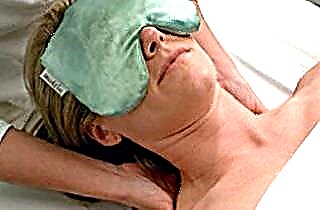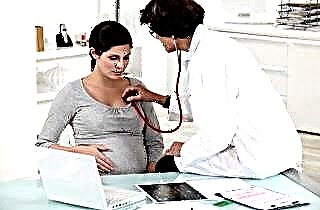Increased pressure is the very first complaint that a doctor hears from a patient suspected of having hypertension. A pressure that differs from the norm above average indicates an incipient pathology. Effective and timely treatment will help avoid the development of complications.

Causes of occurrence
Hypertension grade 2 is one of the most common cardiovascular diseases. According to the World Health Organization, every third adult is sick with it.
The disease tends to progress imperceptibly, because of this, the diagnosis often becomes an unpleasant surprise for the patient. Before learning about the disease, a person pays attention to periodic mood swings, irritability, fatigue in the morning. Frequent dizziness and memory impairment indicate the development of hypertension. After a short rest, they disappear for a short time, after which they can take on a permanent character.
Despite the fact that initially hypertension is a violation of the regulation of vascular pressure, over time it contributes to the development of diseases of internal organs, later portal hypertension may appear. Among diseases leading to an early fatal outcome, hypertension occupies a leading position. It provokes angina pectoris, stroke.
The causes of hypertension of the 2nd degree are associated by many with the fact of aging of the body. Many people in old age really face such a problem, but it can occur not only in elderly people, but also in quite young people. High blood pressure can result from:
- genetic predisposition;
- decrease in the elasticity of the walls of blood vessels, the vascular system;
- sedentary lifestyle;
- the use of alcohol, tobacco smoking and other bad habits;
- obesity, being overweight;
- unbalanced diet;

- disorders associated with the genitourinary system;
- disorders associated with the work of the endocrine system;
- pathologies during pregnancy;
- different tumors;
- excessive salt intake;
- disruption of the vascular system;
- kidney disease;
- disruptions of the hormonal system;
- low stress resistance.
A mild form of the disease occurs in many residents of industrial cities with a population of over one million, where the accelerated pace of life leads to high blood pressure. It is permissible to treat grade 2 hypertension with ACE inhibitor drugs, since with high blood pressure, the nervous system and most of the internal organs are exposed to stress, which feel a lack or excess of blood flow. It helps to treat the symptoms of grade 2 hypertension. Inattention to the signs, delayed treatment can lead to deplorable conditions, such as edema of the brain and lungs. The patient is also more likely to develop a stroke or heart attack. In this regard, many are interested in: how to treat grade 2 hypertension? The method of therapy is identical to that used in the treatment of 1 degree, however, it differs in the dosage and the number of medications used per day.
Doctors will categorize hypertension according to risk levels. The evaluation criterion includes:
- the presence of factors detrimental to the patient's health;
- the likelihood of irreversible loss of brain functioning;
- the possibility of manifestation of dysfunctions in the work of the internal organs of the patient with a change in blood pressure.
However, there are a number of other factors that trigger the development of hypertension in humans. This is the patient's age, the amount of cholesterol in the blood, smoking.
Diagnostics
To diagnose grade 2 hypertension, they resort to instrumental and physical methods. The attending physician attentively listens to all the patient's complaints about well-being, after which he conducts a series of examinations aimed at measuring blood pressure. After fixing the blood pressure indicators for several weeks, the doctor makes a conclusion about the degree of hypertension and the further appointment of the patient's treatment. If initially he was diagnosed with hypertension of the 2nd degree of severity, then it becomes easier to diagnose late degrees, based on the deteriorating blood pressure indicators.
The methods of physical diagnosis of grade 2 hypertension include the following:
- examination of the functioning of the vessels of the periphery;
- systematic measurement of the patient's blood pressure;
- conducting percussion of the vascular bundle;
- examination of the patient's skin for the presence of hyperemia and edema.
Instrumental methods for diagnosing hypertension of the 2nd degree include:
- Ultrasound of the liver, kidneys, pancreatic glands, endocrine glands;
- ultrasound diagnostics of the heart;
- an echocardiogram to detect ventricular hypertrophy;
- electrocardiogram;
- dopplerography.
Such techniques help to identify the main symptoms and causes of the onset of the disease.
Hypertension has three degrees of severity:
- Hypertension 1 degree. It is the initial stage of the disease, has a mild form, symptoms are mild. Blood pressure at this stage of hypertension averages 150-95 mm Hg.
- Hypertension 2 degrees. Symptoms become quite pronounced, headaches, dizziness, chest pains, and sleep problems appear. Blood pressure averages 170-105 mm Hg.
- Hypertension 3 degrees. Grade 3 hypertension is a severe form of hypertension, blood pressure averaging 180-120 mm Hg. It is often accompanied by such diseases as arrhythmia, chronic heart and kidney failure. Portal hypertension appears.
Symptoms
With 1 degree of hypertension, blood pressure increases to 150-95 mm Hg, tends to be constant over a sufficiently long period of time. To reduce the performance, the patient needs to create favorable conditions for improving well-being.
The first symptoms of grade 1 hypertension are often not perceived by patients  as the main risk factor for the development of grade 2 hypertension, but most of the patients go to doctors with complaints of persistent headaches, poor sleep, chest pains, and periodic visual impairment. The presence of small hypertensive crises is noted. The efficiency of the heart and kidneys remains within normal limits. They do not have any of the damage associated with hypertension.
as the main risk factor for the development of grade 2 hypertension, but most of the patients go to doctors with complaints of persistent headaches, poor sleep, chest pains, and periodic visual impairment. The presence of small hypertensive crises is noted. The efficiency of the heart and kidneys remains within normal limits. They do not have any of the damage associated with hypertension.
The ambiguity of the symptoms of stage II hypertension makes it difficult to diagnose the disease in a patient, since high blood pressure can be associated with a large number of other body problems. When diagnosing a disease, experts pay attention to the main symptoms of grade 2 hypertension. This:
- The appearance of edema of the face and edema of the eyelids, eyes.
- The emergence of a vascular network on the surface of the skin of the face.
- Painful throbbing in temples.
- The appearance of aching pain in the back of the head.
- Lack of vigor and energy after a night's sleep.
- Apathy and irritability.
- Swelling of the hands.
- Periodic darkening of the eyes, inability to focus vision.
- Increased heart rate during low physical activity.
- Memory problems.
Hypertension treatment
Stage 1 hypertension is the most favorable for treatment, since the underdeveloped disease has not yet had a strong impact on the patient's health.Following the basic rules of a healthy diet and an appropriate lifestyle can be effective in preventing the first symptoms.
The treatment of grade 1 hypertension includes two methods of treatment:
- traditional drug treatment;
- treatment with traditional medicine.
Can hypertension be cured? Treatment of grade 2 hypertension not only improves the patient's quality of life, but prevents the likelihood of a hypertensive crisis, stroke or myocardial infarction.
The use of a drug method for the treatment of grade 2 hypertension includes the use of such drugs that will help fight the first causative hypertension. For this, experts recommend taking neurostimulants or psychotropic drugs to reduce stress and blood pressure; sedatives to normalize tissue metabolism. These include antidepressants and tranquilizers. Often they resort to the use of sedatives (valerian), drugs containing bromine, sleeping pills, drugs containing magnesium.
Another group for the drug treatment of grade 1 hypertension are diuretics. They help to reduce the retained fluid in the body, the removal of salts from it.
Since the main problem associated with first-degree hypertension is high blood pressure, it is often necessary to use a group of drugs designed to effectively reduce the indicators. They belong to the group of vasodilating drugs and have a peripheral effect, preventing the progression of the disease that portal hypertension has collapsed.
With a lack of effective use of the above drugs, doctors resort to the use of antihypertensive drugs. They are prescribed to stabilize blood pressure and to prevent the progression of diseases of the cardiovascular system. These include:
- beta-blockers;
- thiazide diuretics;
- calcium channel blockers;
- ACE inhibitors.
The use of thiazide diuretics prevents the risk of developing cardiovascular diseases. Doctors often prescribe thiazide diuretics such as Torasemide, Furosemide, Amiloride, Chlorthalidone, Indapamide, and Hydrochlorothiazide.
The use of beta-blockers reduces blood pressure by reducing heart rate and blood output. Usually attributed to the presence of ischemic disease. These drugs are able to normalize blood pressure in cardiac arrhythmias, heart failure, tachycardia, angina pectoris. These include:
- Labetalol;
- "Acebutolol";
- Sotalol;
- "Pondolol";
- Bisoprolol;
- Nebivolol.
 The functions of ACE inhibitors include a decrease in angiotensin-converting enzymes. Such treatment is prescribed when the patient undergoes myocardial infarction, heart failure, body problems accompanying diabetes, and vascular pathology that cause portal hypertension. These drugs are especially recommended for patients with grade 3 hypertension.
The functions of ACE inhibitors include a decrease in angiotensin-converting enzymes. Such treatment is prescribed when the patient undergoes myocardial infarction, heart failure, body problems accompanying diabetes, and vascular pathology that cause portal hypertension. These drugs are especially recommended for patients with grade 3 hypertension.
Before taking medications belonging to any of these groups, be sure to consult a specialist to prescribe the correct dosage. Doctors advise using complex therapy with constant monitoring of blood pressure.
Diet is one of the main principles of treatment for grade 1 hypertension, since the treatment regimen requires at least a decrease in the level of salt in the blood.
Based on this, nutritionists recommend that you flatly refuse to eat salty, fatty and fried foods, as well as foods containing light carbohydrates.
Treatment does not imply a reduction in the patient's active lifestyle. Light physical activity, used in physiotherapy exercises, promotes better absorption of drugs by the body. It is worth adhering to the correct sleep regimen, avoiding stressful situations and giving up bad habits.
The traditional therapies that our ancestors resorted to are herbal remedies with a sedative effect to help fight high blood pressure. A large number of infusions with mint, hawthorn, yarrow, with the addition of green tea, rose hips and lemon are used, which are excellent remedies for hypertension.
At-risk groups
Arterial hypertension of the 2nd degree is divided into 4 risk groups. They increase as symptoms progress. Pathology can lead to a hypertensive crisis, contributing to the rapid damage to internal organs affected by hypertension. The nervous system suffers no less, which, even during a night's sleep, cannot fully recover due to the stresses caused by pressure surges in grade 2 arterial hypertension.
Also, benign hypertension and malignant hypertension are distinguished, which mainly depends on the activity of the transformation of hypertension from one stage to another. In the presence of a malignant form with active development, the disease can be fatal, which is associated with a thickening of the vessel walls due to increased pressure in the arteries and the rapid pumping of blood through them.
Hypertension grade 2, risk 2... Appears in vascular atherosclerosis, which is accompanied by frequent pain in the chest area. This occurs as a result of a shortage of blood flowing into the coronary artery.
This pathology of grade 2 arterial hypertension (risk 2) refers to heart disease of moderate manifestation, since over time, less than a quarter of patients have a risk of developing a cardiovascular disorder with great danger to life.
The possibility of establishing a diagnosis of grade 2 hypertension (risk 2) in a patient is possible only if at the time of diagnosis the patient had no diabetes mellitus, stroke, and the endocrine system did not undergo changes. An overweight patient can have dangerous and irreversible consequences for the body.
Hypertension grade 2, risk 3... It is usually diagnosed in a patient in parallel with atherosclerosis, diabetes mellitus, deformed vessels, to which a developed form of hypertension is usually predicted. Against the background of these diseases, progressive kidney pathology is often detected. With grade 2 hypertension (risk 3), coronary pressure worsens, which as a result leads to ischemia or hypertensive crisis, which, against the background of pathology, leads to emotional instability of the patient. Often, type 2 hypertension (3) can lead to disability.
 Hypertension grade 2, risk 4... In the presence of a complex of diseases, which includes diabetes, ischemia and atherosclerosis, the patient is diagnosed with grade 2 hypertension (risk 4). Also, this diagnosis is given to people who have survived a heart attack, regardless of the affected area.
Hypertension grade 2, risk 4... In the presence of a complex of diseases, which includes diabetes, ischemia and atherosclerosis, the patient is diagnosed with grade 2 hypertension (risk 4). Also, this diagnosis is given to people who have survived a heart attack, regardless of the affected area.
In any case, experts are able to predict the degree of development of hypertension, which, in turn, leads to the prevention of disease progression in the presence of effective treatment. Timely diagnostics reduces the regularity of the appearance of hypertensive crises that occur against the background of pathology.
Disability with grade 2 hypertension
Hypertensive disease stage 2 may serve as a reason to give a person a disability group. In the presence of a persistent disruption of the body of a patient suffering from stage 2 hypertension, the patient is referred for examination to experts to clarify all indicators. The degree of disability is influenced by such factors as:
- stage of the disease;
- the number of hypertensive crises;
- working conditions of the patient.
Establishment of a disability group is required for a patient for safe employment with special working conditions. Patients with a disability diagnosed with grade 2 hypertension should be allowed to work, taking into account certain restrictions, which include:
- strong vibration and noise;
- physical exercise;
- emotional exhaustion;
- high height;
- long working day.
When diagnosing a malignant hypertension stage 2, the patient receives a disability of the second group, due to inability to work. To confirm the conclusion, a medical examination is carried out once a year. The assignment of a disability group to a patient with hypertension of 2 and 3 degrees is associated with the requirement of social protection of patients, since it has a limited capacity for work.




